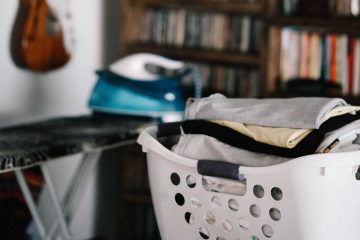Chemical residues can linger on various surfaces, posing potential health risks and diminishing the cleanliness of your home. Whether from cleaning products, pesticides, or other household chemicals, it’s essential to remove these residues effectively. This guide will walk you through the steps to eliminate chemical residues safely and efficiently.
Materials Needed
- White vinegar
- Baking soda
- Mild dish soap
- Microfiber cloths
- Spray bottle
- Soft-bristle brush
- Warm water
- Protective gloves (optional)
Step-by-Step Guide
1. Identify Affected Areas
- Inspect Surfaces: Look for areas where chemical residues may be present, such as countertops, floors, appliances, and furniture.
- Check Labels: If possible, identify the types of chemicals used on these surfaces to determine the best cleaning approach.
2. Ventilate the Area
- Open Windows: Ensure good ventilation by opening windows and doors to allow fresh air to circulate.
- Use Fans: Use fans to help disperse any lingering fumes from chemical residues.
3. Prepare a Cleaning Solution
- Vinegar Solution: Mix equal parts white vinegar and warm water in a spray bottle. Vinegar is effective at neutralizing many chemical residues.
- Baking Soda Paste: For stubborn residues, mix baking soda with a small amount of water to form a paste.
4. Clean with Vinegar Solution
- Spray Surface: Lightly spray the affected area with the vinegar solution.
- Wipe Clean: Use a microfiber cloth to wipe the surface, working in circular motions to lift the residue.
- Rinse: Rinse the cloth with warm water and wipe the surface again to remove any remaining vinegar solution.
5. Use Baking Soda Paste for Stubborn Residue
- Apply Paste: Apply the baking soda paste to areas with stubborn residues.
- Scrub Gently: Use a soft-bristle brush to gently scrub the area. Baking soda’s mild abrasiveness helps break down residues without damaging surfaces.
- Rinse Thoroughly: Wipe away the paste with a damp cloth and rinse the surface with warm water.
6. Clean with Mild Dish Soap
- Soap Solution: For surfaces that need extra cleaning, mix a few drops of mild dish soap with warm water.
- Wipe Surface: Dip a microfiber cloth into the soapy water and wipe the surface, then rinse with a clean cloth and warm water to remove any soap residue.
7. Dry and Inspect
- Dry Surface: Use a clean, dry microfiber cloth to dry the surface thoroughly.
- Inspect Area: Check the area to ensure all chemical residues have been removed. Repeat the cleaning process if necessary.
Tips for Preventing Chemical Residue
- Use Natural Cleaners: Opt for natural cleaning products like vinegar, baking soda, and lemon juice to minimize chemical residues.
- Rinse Well: Always rinse surfaces thoroughly after using cleaning products to remove any remaining chemicals.
- Proper Storage: Store chemicals and cleaning products properly to prevent spills and leaks that can lead to residue buildup.
Quotes from Real People
- Emma L., Homeowner: “Switching to natural cleaners has made a huge difference. I feel safer knowing there are no harsh chemicals left behind.”
- John D., Chef: “Keeping my kitchen free of chemical residues is crucial. Using vinegar and baking soda has been a game-changer for maintaining cleanliness.”
Conclusion
Removing chemical residues from your home is essential for a healthier environment. By using natural cleaning solutions like vinegar and baking soda, you can effectively eliminate residues and keep your living spaces safe. Regular cleaning and proper storage of chemicals will help prevent residue buildup, ensuring a cleaner and healthier home.
For more cleaning tips and professional services, visit Kleansage or call us at 210-706-0526.




